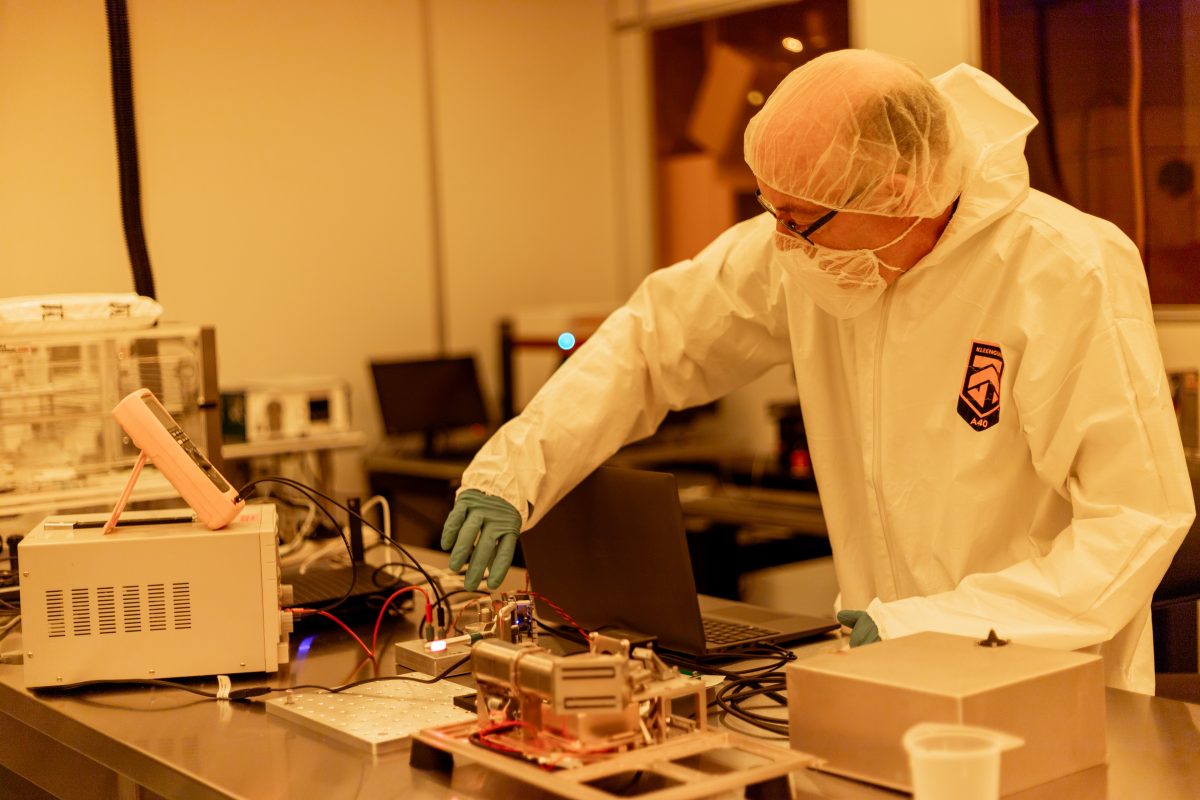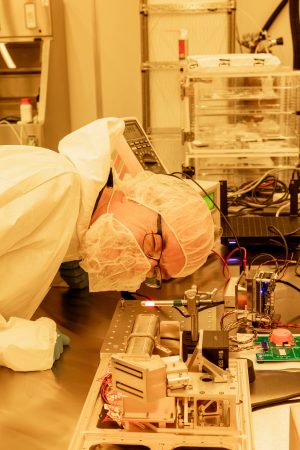
Utilizing St. Cloud State University’s state-of-the-art clean room in the Integrated Science and Engineering Laboratory Facility (ISELF), Professor Emeritus Dr. John Harlander is working on an independent project that is an extension of the Ionospheric Connection (ICON) NASA satellite project that he previously worked on.
Dr. Harlander is using ISELF’s clean room to test a next-generation instrument that is intended to orbit the Earth while monitoring upper atmospheric winds. This new instrument, the Interferometer for Neutral Dynamics (INDI), is a follow-on to the ICON satellite mission.

NASA’s ICON mission, active between Oct. 2019 and Nov. 2022, was a satellite mission dedicated to helping scientists better understand and forecast upper atmospheric winds. The ICON satellite was launched into orbit on Oct. 9, 2019. Since that launch, Dr. Harlander has been monitoring and calibrating the upper atmospheric wind data collected by ICON.
The shoe-box sized INDI instrument is similar to the wind sensor used on the ICON satellite, but is much smaller. In addition to being smaller, it targets a narrower range of measurements than the ICON did and is much less expensive, allowing for more flight opportunities.
“The desire is to have multiple of these sensors in orbit so that we can get global coverage and real-time data that will feed into forecast models for space weather so that we can do better weather forecasting, which is the ultimate goal,” Dr. Harlander said.
The ICON mission was a basic science mission that helped scientists gain an understanding of the physics involved. The current mission is targeted towards specific wind measurements in the Earth’s upper atmosphere that will provide input to forecast models of space weather.
In the coming weeks, Harlander will wrap up his work in ISELF and will take the INDI instrument to Washington, DC. There, the instrument will undergo various environmental tests, including vibration and thermal cycling to ensure its survival in space.
